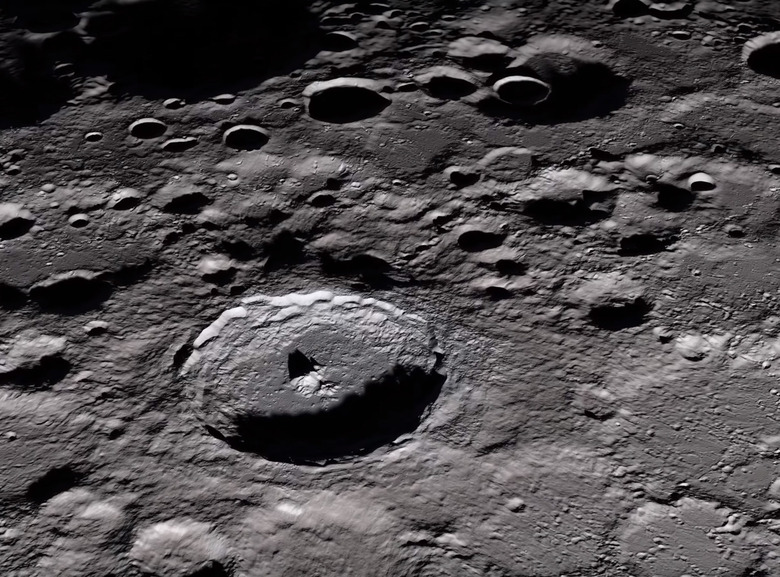Should We Stop Visiting The Moon's Poles?
- The Moon has water ice hiding near its poles, which is something that is a fairly recent discovery.
- The ice could hold clues about where the water on Earth came from and tell us a lot about the history of the Earth-Moon system.
- An increasing number of missions to the Moon's poles could potentially contaminate the ice and taint future discoveries, scientists now warn.
The Moon is far from the dry, dusty rock that astronomers of decades past assumed it was. There's actually water on the Moon, and we know this thanks to high-tech observations that have uncovered its presence in the form of ice. This ice is located mostly at the Moon's poles, hidden in deep craters where rays from the Sun never reach.
That ice could be incredibly important from a scientific perspective. Pristine and untainted, the frozen water could offer researchers a clue as to how water arrived on Earth as well as the Moon. However, it will only continue to be valuable and important if it remains unspoiled, and with an increasing number of missions targeting the Moon's poles, scientists are now worried that these efforts of exploration may ultimately ruin the frozen water.
A new article published by Nature lays out the case for taking great care in exploring these regions of the Moon, specifically those that hope to utilize the ice in the making of fuel or as a resource for ongoing or future missions.
Water on the Moon is indeed a resource that could be used in the production of fuels that could send missions deeper into the solar system than we've gone before. However, it is that same ice that could reveal some incredibly interesting things about the Moon, the Earth, and our system as a whole.
There are scientists on both sides of the argument. Some believe we should use the ice since it's there, and it's clearly a resource that could be used for exploration of the cosmos. Meanwhile, others believe it is too important to be tampered with at this time, and that it should be preserved until we can safely obtain samples for study.
Right now, the best guess for how Earth got its water after being covered in molten rock during its formative years is that water in asteroids and comets that crashed into Earth eventually pooled in huge amounts, forming our planet's oceans and eventually lakes and other water systems.
We'll have to wait and see how this all unfolds, but based on the fact that there's no governing body that decides what happens to resources on other worlds, odds are that whoever gets there first will be able to do whatever they want. Whether their aims are to sample and study the ice or harvest it for fuel remains to be seen.
